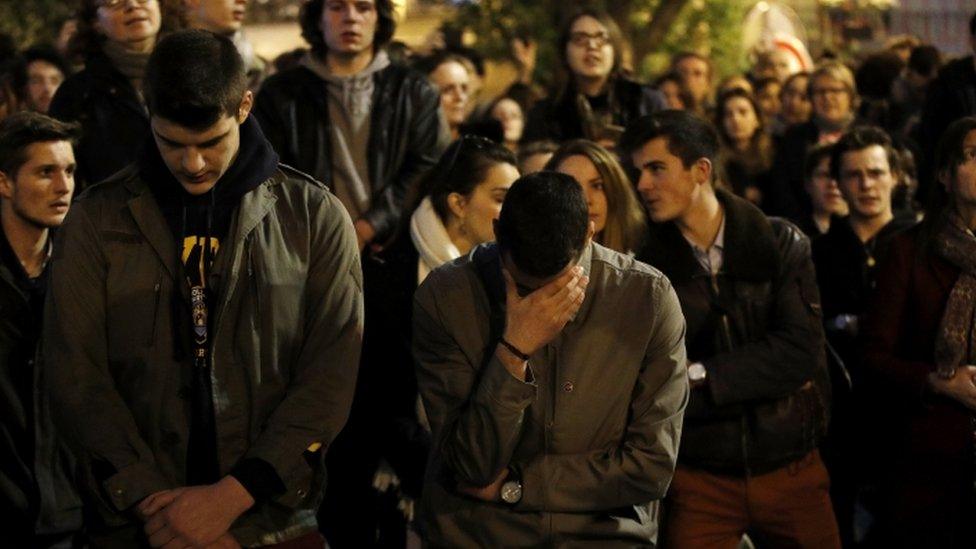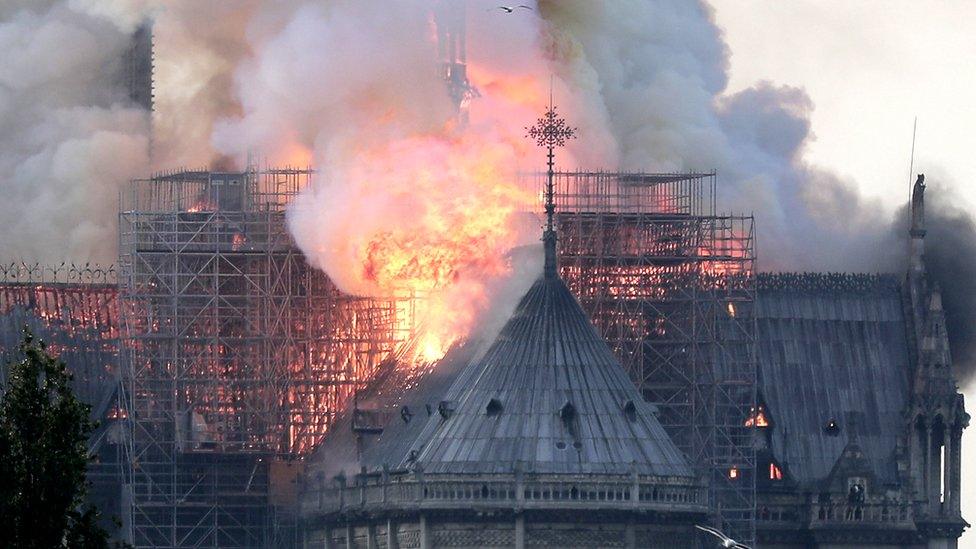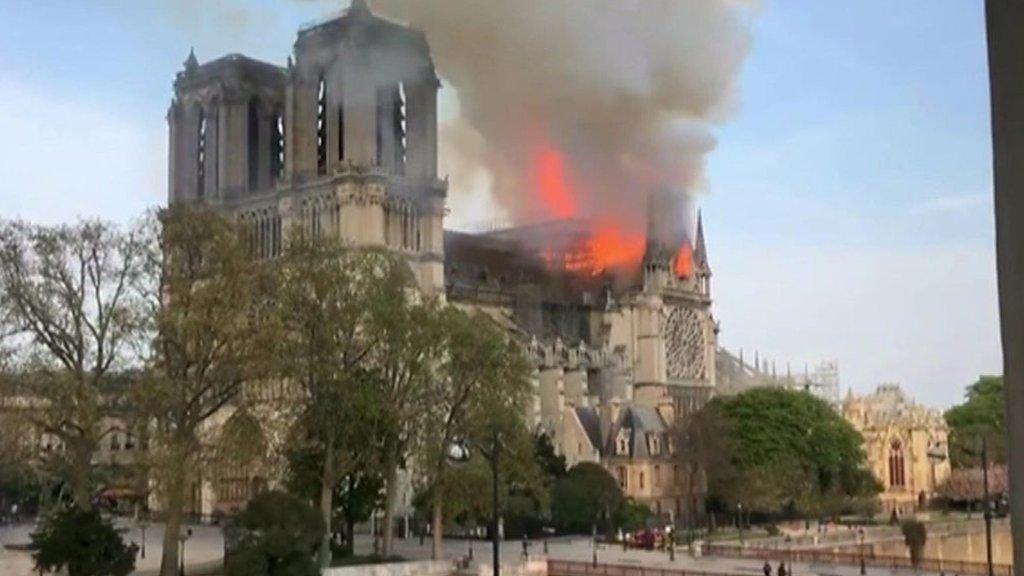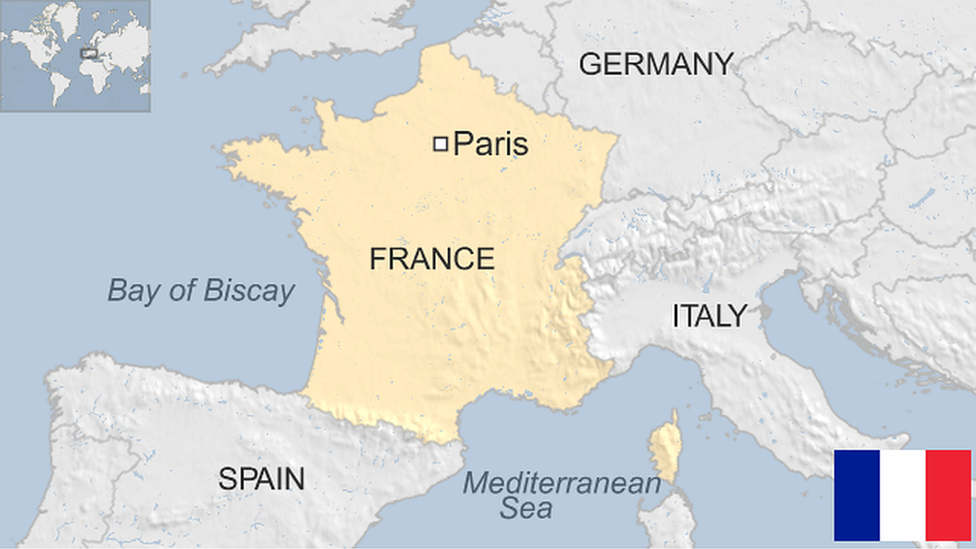Notre-Dame fire: What the cathedral means to the French
- Published

Watching the cathedral go up in flames is deeply upsetting for the locals
No other site represents France quite like Notre-Dame.
Its main rival as a national symbol, the Eiffel Tower, is little more than a century old. Notre-Dame has stood tall above Paris since the 1200s.
It has given its name to one of the country's literary masterpieces. Victor Hugo's novel Hunchback of Notre-Dame is known to the French simply as Notre Dame de Paris.
The last time the cathedral suffered major damage was during the French Revolution, when statues of saints were hacked by anti-clerical hotheads. The building survived the 1871 Commune uprising, as well as two world wars, largely unscathed.
It is impossible to overstate how shocking it is to watch such an enduring embodiment of our country burn.
Locals are not famous for their sunny disposition, but few can walk along the banks of the Seine in the central part of the capital without feeling their spirits rise at the majestic bulk of Notre-Dame.
It is one of the few sights sure to make a Parisian feel good about living there.
The major operation to try to save the building
Like all cherished places everywhere, it is not one residents visit very often. In the three decades I spent in my native city, I can't have been inside Notre-Dame more than three or four times - and then only with foreign visitors.
There are many of those. The cathedral is not just the most popular tourist site in Western Europe. Eight centuries after its completion, it is also still a place of worship - about 2,000 services are held there every year.
But it is also much more than a religious site. President Emmanuel Macron has expressed the shock of a "whole nation" at the fire. As Paris Mayor Anne Hidalgo said, Notre Dame is "part of our common heritage".
Many of those looking on as flames engulf the building are in tears. Their dismay is shared by believers and non-believers alike in a nation where faith has long ceased to be a binding force.
- Published16 April 2019

- Published15 April 2019

- Published5 March 2018

- Published9 January 2024
